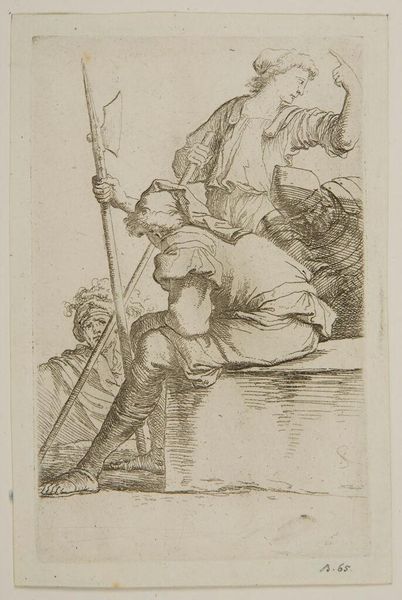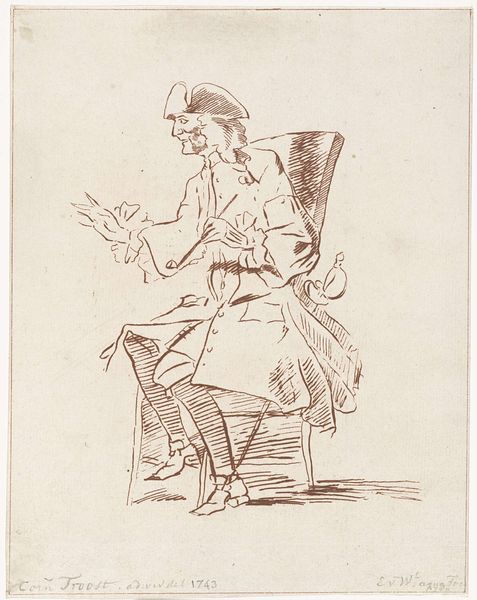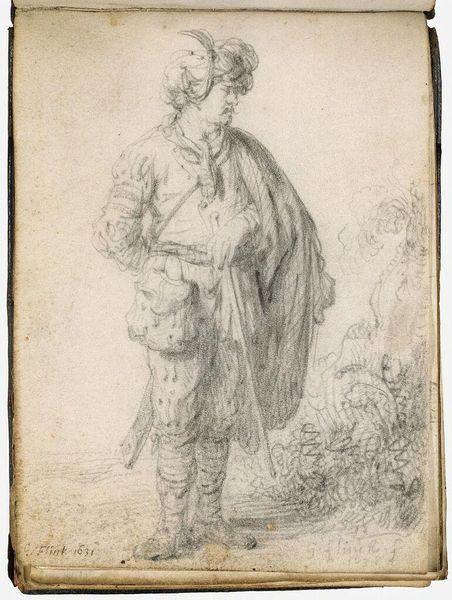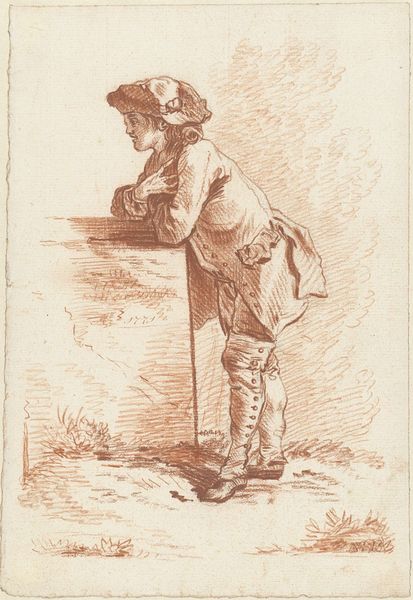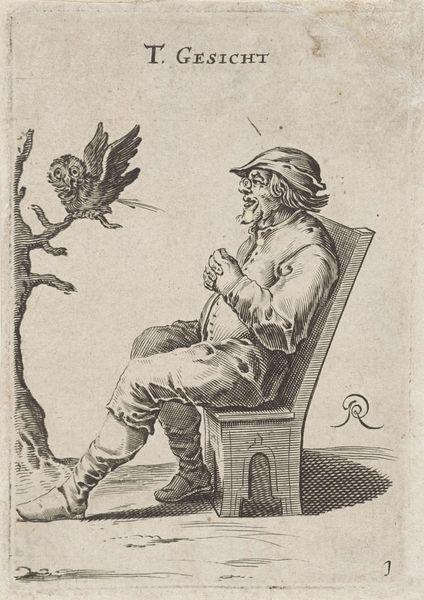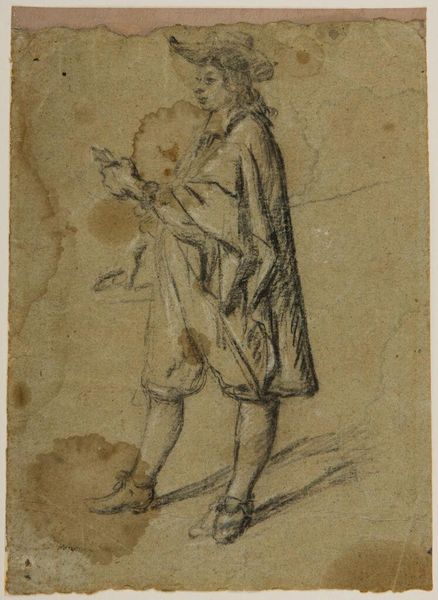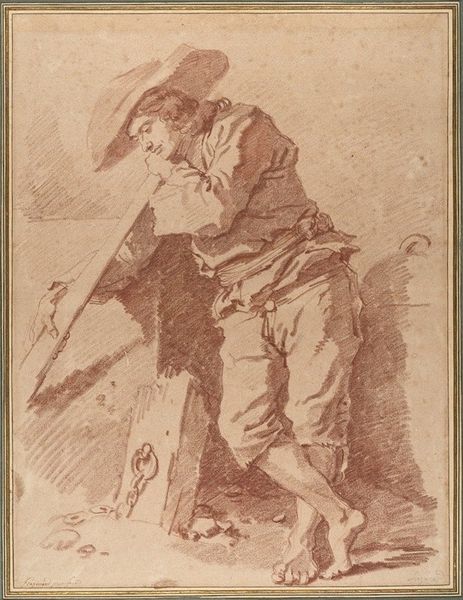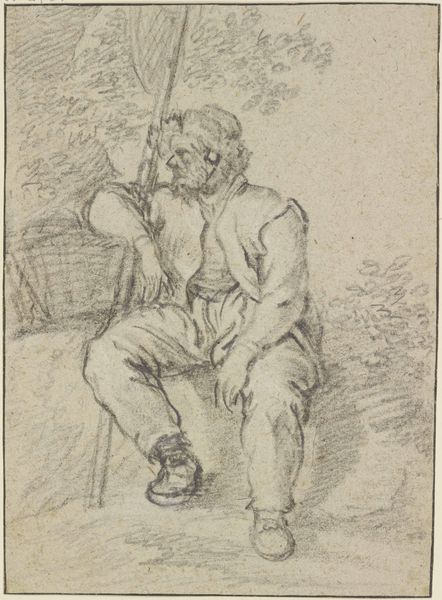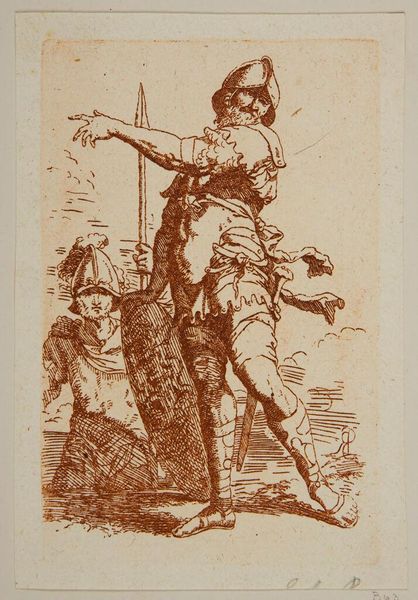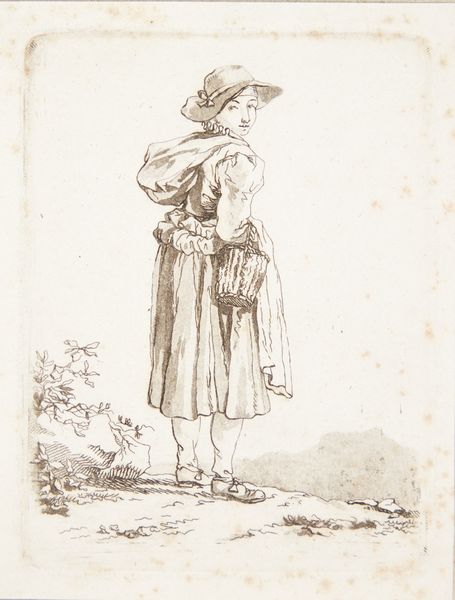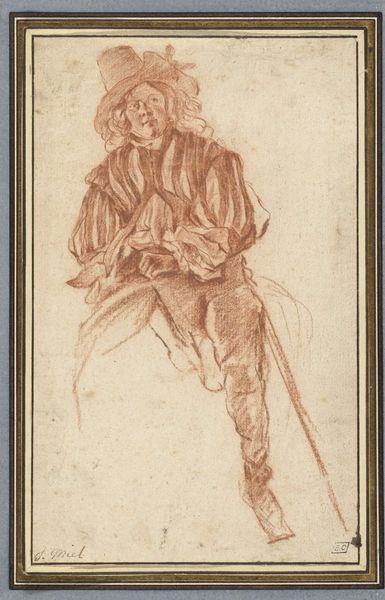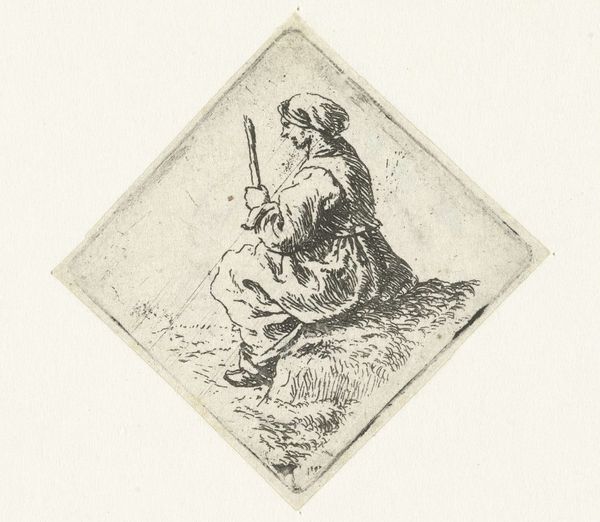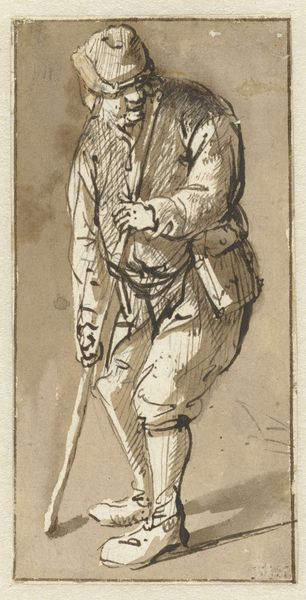
drawing, paper, ink
#
portrait
#
drawing
#
baroque
#
pen sketch
#
pencil sketch
#
paper
#
ink
#
genre-painting
Dimensions: height 50 mm, width 35 mm
Copyright: Rijks Museum: Open Domain
Pieter Cornelisz. Verbeeck made this etching, “Rustende herder,” sometime in the first half of the 17th century. The image is printed on paper, using etching, a printmaking technique that relies on acid to corrode the unprotected parts of a metal surface to create a design. The plate would have been made from copper, carefully coated with wax and then scratched into with a needle. Once submerged in acid, the lines would be bitten into the metal, before being inked and printed. The etched lines create a sense of depth and shadow, particularly in the figure's clothing and the surrounding landscape. The texture of the paper also adds to the overall effect. This image is a direct product of skilled labor, and the knowledge of particular chemical and mechanical processes. The choice of printing allows for relatively quick reproduction and dissemination. It invites us to consider the labor involved in both creating the image and the labor of the shepherd it depicts. This work blurs the boundaries between fine art and craft by combining artistic skill with technical precision.
Comments
No comments
Be the first to comment and join the conversation on the ultimate creative platform.
